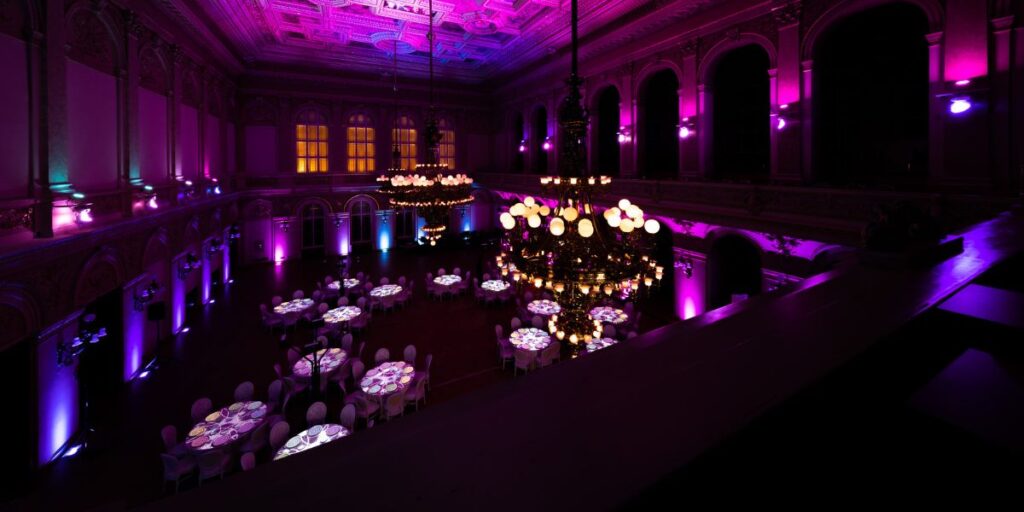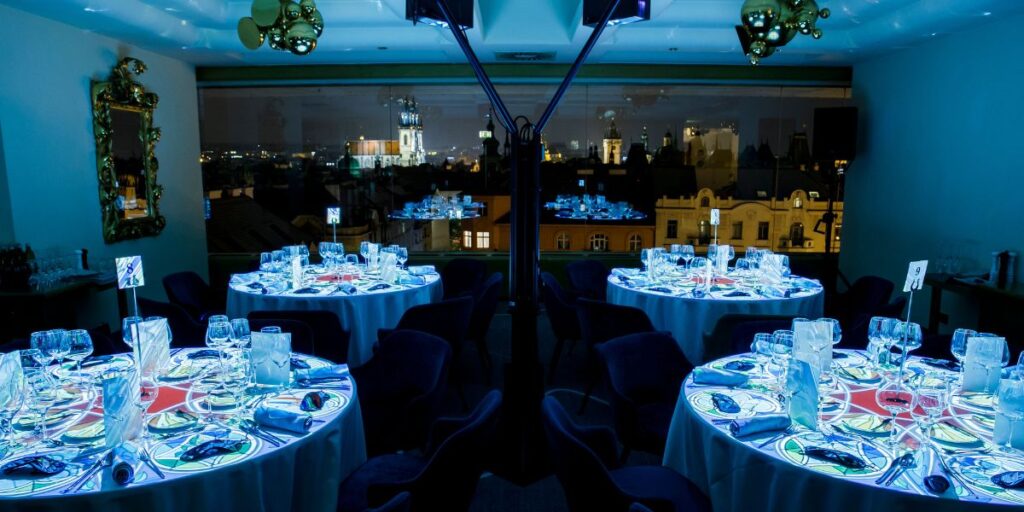In the modern world of entertainment, catering, and event design, new technologies are increasingly emerging that change the traditional ways we perceive spaces and experiences. One such innovation is tablemapping – an advanced technology that, through projection and interactive effects, can transform an ordinary table into a dynamic scene full of movement, color, and interactive elements. This trend is finding its place in restaurants, corporate events, weddings, and other gatherings, creating unforgettable experiences. So, what exactly is tablemapping, and how does it work?

What is Tablemapping?
Tablemapping is a technology that uses 3D projections on table surfaces to create interactive visual effects and animations. Through projectors and specialized software, images and animations are precisely projected onto tables to perfectly fit their shape and surface. The result is an impressive visual effect that can simulate various scenarios, from changing environments to interactive elements that guests can control with hand movements.
The projections can be so detailed that the table appears covered with moving patterns, flowing water, flowers, or even 3D animated characters. Combined with music and other sensory elements like sound and light, tablemapping can create a truly immersive experience.
How Does Tablemapping Work?
Tablemapping technology uses projection mapping, a technique that allows images to be projected onto uneven and three-dimensional surfaces, such as tables. Projectors are carefully positioned and programmed to match the image precisely to the table’s surface, regardless of its shape or size.
During the preparation, a virtual model of the surface is created and used as a template for animations and projections. This technology can range from simple decorative elements, like dynamic patterns, to complex interactive effects that respond to the movement of guests or even the dishes served on the table. With sensors and advanced software, tablemapping can track hand movements, creating an interactive environment that changes in real-time.
Applications in Gastronomy and Events
Tablemapping has become a popular tool in gastronomy, especially in luxury restaurants and special events. For example, in some high-end restaurants, guests can experience a “live” table that changes throughout their meal – from projections of ingredients and recipes to animated presentations of dishes. This experience enhances the venue’s attractiveness and exclusivity, creating unforgettable memories for guests.
Weddings and corporate events are other areas where tablemapping has gained popularity. At weddings, tables can display romantic themes, floral patterns, or even photos of the newlyweds, while at corporate events, tablemapping can present logos, graphs, or interactive games for participants.
Interactivity and the Future
One of the main advantages of tablemapping is its interactivity. Guests can not only watch the table transform but also interact with the projections. For example, in a restaurant, guests can “open” a virtual menu directly on the table, browse through the items, and even see animations of the dishes before they are served. At events, guests can play interactive games or participate in dynamic presentations controlled by hand movements or other gestures.
The technology is continuously evolving, and the future of tablemapping promises even more possibilities. It is expected that tablemapping will increasingly be combined with other technologies like augmented reality (AR) and virtual reality (VR), further enhancing the experience for guests.

Tablemapping brings a whole new level of interactivity and visual experience, transforming traditional dining and events into something extraordinary. Whether it’s a restaurant, wedding reception, or corporate event, tablemapping offers the potential to create personalized and dynamic environments, providing guests with unforgettable experiences. With technologies that keep improving, we can expect tablemapping to play an increasingly significant role in the future of event design and experiential gastronomy.
